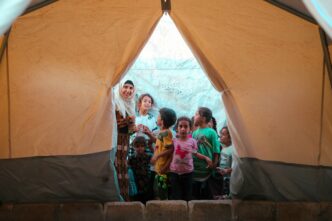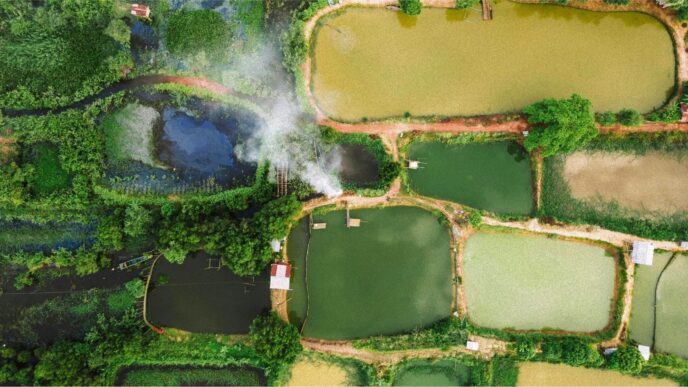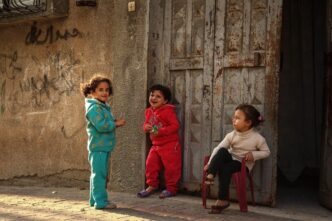The global response to humanitarian crises is anything but equal. Some disasters, conflicts, and humanitarian emergencies dominate news cycles, receive billions in aid, and mobilize global solidarity. Others—equally devastating, equally urgent—are met with silence, ignored by mainstream media, underfunded by international donors, and forgotten by the world.
When Russia invaded Ukraine in 2022, Western nations responded with unprecedented levels of military, economic, and humanitarian support. In contrast, conflicts in Sudan, Palestine, Yemen, and the Democratic Republic of Congo—where human suffering is just as severe—receive only a fraction of the attention and resources.
Why do some crises spark global outrage and immediate action, while others remain largely overlooked? Who decides which lives are worth saving? And what does this selective response say about the politics of humanitarian aid, media bias, and global power structures?
This article critically examines the factors that determine why some humanitarian crises receive more attention than others, highlighting the role of geopolitics, media narratives, racial and religious biases, and economic interests in shaping global responses.
The Inequality of Humanitarian Attention
A Tale of Two Crises: Ukraine vs. Yemen
When war broke out in Ukraine in February 2022, Western nations quickly mobilized:
- Over $100 billion in military, economic, and humanitarian aid was pledged by the US and EU.
- Ukrainian refugees were welcomed into Europe with open arms, bypassing the bureaucratic hurdles faced by Middle Eastern and African refugees.
- Media coverage was constant and deeply personal, humanizing Ukrainian victims and rallying global support.
Compare this to Yemen, where:
- The world’s worst humanitarian crisis—caused by war, famine, and disease—has persisted for nearly a decade.
- The UN describes Yemen as the world’s largest humanitarian disaster, yet funding appeals remain severely under-met.
- Yemenis fleeing war are often turned away from Western nations, despite facing starvation and aerial bombardment.
This stark contrast highlights an uncomfortable truth: not all lives are valued equally in global humanitarian discourse.
Who Decides Which Crises Matter?
Global attention and aid are largely dictated by:
- Geopolitical Interests – Nations prioritize crises where they have strategic stakes (e.g., Ukraine vs. Syria).
- Media Narratives – Western media dictates which conflicts are “newsworthy.”
- Donor Preferences – Governments and humanitarian organizations allocate funds based on political alliances and economic interests rather than need alone.
This selective response creates a hierarchy of suffering, where some crises receive swift intervention while others languish in obscurity.
The Role of Media and Public Perception
Media as a Gatekeeper of Humanitarian Response
News coverage plays a critical role in shaping public perception and mobilizing humanitarian aid. Studies show that humanitarian funding is directly linked to media attention—the more coverage a crisis receives, the more donations and political action it generates.
However, this coverage is deeply biased:
- White, European victims receive disproportionate attention. Conflicts affecting Black, Arab, and Muslim populations often receive minimal coverage.
- Crises that involve Western adversaries (e.g., Russia, Iran, China) receive more sustained media interest than those involving Western-backed actors.
- Personalized storytelling (showing individual victims, families, and human moments) is reserved for select conflicts, while others are presented as statistics and abstract geopolitical struggles.
Racial and Religious Bias in Reporting
The racial and religious lens of global media skews perceptions of who is deserving of aid and sympathy:
- Western victims are humanized, their suffering made relatable. Ukrainians were described as “civilized,” “European,” and “just like us” in news coverage. (BBC, 2022)
- Muslim-majority and African nations are often dehumanized. Coverage of crises in Palestine, Sudan, and Afghanistan often portrays them as perpetual conflict zones, riddled with extremism, rather than human tragedies.
- Refugees from the Middle East and Africa are framed as security threats, while European refugees are treated as innocent victims of war.
This media bias shapes public sympathy and influences where governments and humanitarian organizations direct their resources.
Geopolitical and Economic Interests in Humanitarian Aid
Aid as a Political Tool
Humanitarian aid is often used as a political weapon. Governments and international organizations strategically distribute aid based on:
- Military and economic alliances – Countries with strong trade ties or strategic value receive more humanitarian support.
- Foreign policy agendas – Aid is used to reinforce political influence in key regions (e.g., the US providing billions in aid to allies while ignoring crises in adversarial nations).
- Selective sanctions and blockades – Some crises are exacerbated by economic sanctions, restricting humanitarian access.
For example:
- Gaza remains under a near-total blockade, restricting essential aid, while military aid to Israel continues uninterrupted.
- Afghanistan faces severe humanitarian collapse, yet aid is deliberately limited due to political disputes with the Taliban.
The Business of Humanitarianism
Aid is not always about altruism—there is profit in crisis management. Many humanitarian efforts:
- Prioritize donor interests over local needs, focusing on programs that align with political narratives.
- Use aid as a tool of dependency, rather than investing in long-term solutions.
- Favor large international NGOs, while grassroots, local Muslim-led charities struggle for funding due to political restrictions.
This raises an urgent question: Is humanitarianism truly about saving lives, or is it just another tool of global power?
Humanitarian Organizations and Funding Bias
The Funding Disparity
- Western-led humanitarian organizations receive far greater funding than local or faith-based NGOs.
- Muslim-led charities are often subject to counter-terrorism laws, frozen bank accounts, and excessive scrutiny, limiting their ability to operate.
- NGOs that align with Western political interests receive priority funding, while grassroots movements are ignored.
For instance, the Palestinian Red Crescent—which provides emergency medical aid in Gaza—has faced funding restrictions, while Western-backed aid efforts continue unimpeded.
Donor Fatigue and Short-Lived Attention
Some crises receive a surge in donations only during peak media attention but fade from public consciousness within weeks. Humanitarian organizations struggle with:
- Short-term spikes in donations, rather than sustainable funding models.
- Public disinterest in protracted crises, such as the Rohingya genocide or the famine in Somalia.
- The need to constantly “market” crises, with shocking images to maintain donor interest.
This cycle prioritizes spectacle over sustained action, leaving many communities without long-term solutions.
How to Build a Fairer Humanitarian Response System
To address these disparities, the humanitarian sector must undergo serious reform:
- Diversify Voices in Aid Decision-Making – More Muslim, African, and grassroots organizations must have leadership roles in global aid efforts.
- Hold Media Accountable for Bias – Demand more equitable reporting of global crises.
- Break the Political Control of Aid – Humanitarian efforts must be independent of geopolitical agendas.
- Support Local and Faith-Based Initiatives – Encourage donations to Muslim-led and grassroots organizations that are embedded in affected communities.
- Push for Consistent Humanitarian Standards – All lives should be valued equally, regardless of nationality, race, or religion.
Conclusion: A Call for Justice in Humanitarianism
The way we respond to crises reveals our collective moral priorities. If we truly believe in the sanctity of human life, then every crisis—whether in Ukraine, Gaza, Sudan, or Afghanistan—deserves equal attention and aid.
Humanitarianism should not be dictated by political interests or media narratives. It should be driven by a commitment to justice, equity, and the protection of human dignity.
Until the world treats all human suffering as equally urgent, the politics of humanitarian aid will remain deeply flawed. The question is—are we willing to change it?














